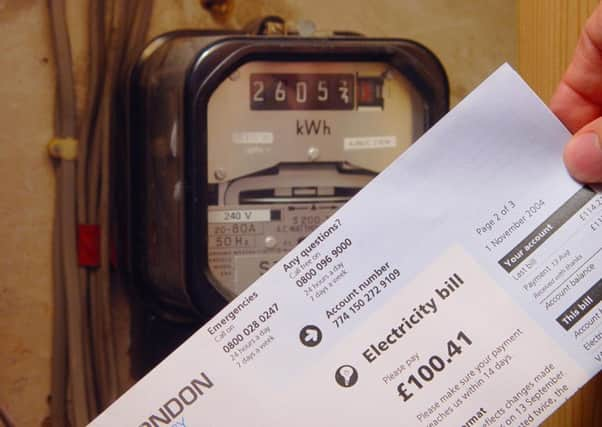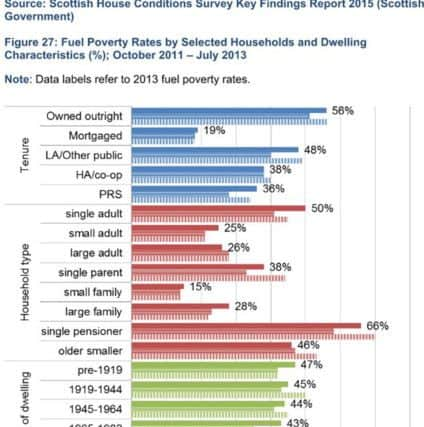Elizabeth Gore: The scale of fuel poverty in Scotland


Fuel poverty – the inability to afford a reasonable level of heat and power – is recognised as being a significant problem in Scotland. The official figures, published by the Scottish Government in the Scottish House Conditions Survey (SHCS Key Findings Report, 2013) show there are 940,000 fuel poor Scottish households (39.1 per cent). This is calculated under the definition that they need to use more than 10 per cent of income on fuel expenditure.
The impact of being fuel poor can be debt, poor health, discomfort and misery. Often fuel poverty is associated with older people, conjuring up a picture of an older man or woman sitting huddled in front of a fire … and this image is not wrong. Single pensioner households had the highest rate of fuel poverty in 2013 at 66 per cent, an increase of 8 percentage points from 2012, according to the SHCS.
Advertisement
Hide AdAdvertisement
Hide AdYet is it not just the aged who feel the effects of fuel poverty. Recent research by the new Policy Institute for the Joseph Rowntree Foundation (Monitoring Poverty and Social Exclusion in Scotland 2015) found that young adults under 30 now make up the biggest share of those experiencing general poverty in Scotland. They are also the only age group to have seen an increase in poverty levels since 2003.


As might be expected fuel poverty does have a strong link with income with the lower income groups showing the highest rates.
But the SHCS analysis points to a more complex set of reasons for fuel poverty, which underpins the widely held view that there are three main causes. Alongside low household income there is poor energy efficiency of the home and high domestic fuel prices.
As might be expected, more energy efficient homes are associated with lower fuel poverty rates. Similarly, access to cheaper fuels for heating and powering the home can lower the risk of being fuel poor.
In 2001, the Housing (Scotland) Act placed a statutory duty on the Scottish Government to ensure, so far as reasonably practicable, that people are not living in fuel poverty in Scotland by November 2016.
With just over a year to go until that point is reached, it is essential that the data at our disposal is used to best effect to design and deliver solutions.
It is even more important not to lose sight amongst the statistics of the people whose lives are affected by the decisions made.
Elizabeth Gore is the deputy director of Energy Action Scotland (EAS). Setup as a charity in 1983, EAS campaigns for an end to fuel poverty in Scotland and is the only national body with this sole remit.